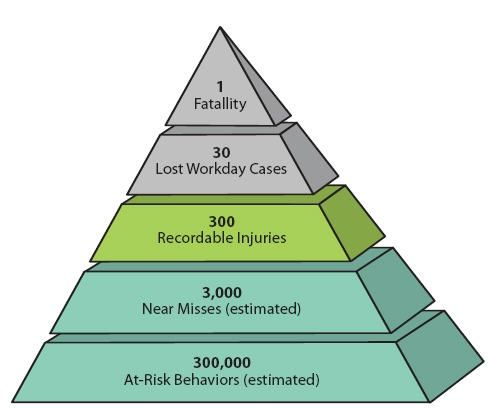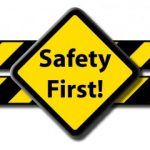
The Importance of Health and Safety Committees in the Workplace
 “Why would a company invest the resources, time, and money to create a workplace Health and Safety Committee?”
“Why would a company invest the resources, time, and money to create a workplace Health and Safety Committee?”
That’s a reasonable question! After all, we have a veritable alphabet soup of agencies in the Americas and Europe to look after employee health and safety – OSHA, FDA, FMCSA, ADR, IATA, IMCO… the list goes on and on. Some might argue that health and safety committees represent additional cost to a business. Given our world economy, and global competition, very few businesses are in a position to take on additional costs. Is improving employee health and safety, however, truly an additional cost?
True Costs of Workplace Accidents
Consider the cost of a minor workplace accident. One of the major causes of workplace injuries is what seems like, in principle, a very simple thing: Slips, trips, and falls. Let’s say an employee slips on ice and twists an ankle, or falls and has a shoulder injury. First level treatment for those injuries is indeed an added cost. Time off for doctor visits, medication for pain, rehabilitation visits and so on. Maybe this totals a couple thousand dollars.
Now think about the hidden costs of this injury:
- Lost productivity while the employee is on restricted duty, and unable to cover normal responsibilities
- The administrative cost of reporting this incident, within the corporation and to the various governing bodies
- The potential damage done through unfavorable media coverage affecting the company reputation
In several surveys, estimates are that these indirect costs can be four to ten times the direct cost of dealing with the injury.

Looking at the Safety Pyramid emphasizes the importance of accident avoidance, starting at the most basic level.
At its simplest, the conclusion is that for every high-profile incident, literally thousands of near miss incidents have occurred before it. Had all these near misses been addressed and resolved, perhaps the high-profile incidents could be greatly reduced or even eliminated.
 And this leads to the purpose of a workplace Health and Safety Committee. The charter is quite simple – increase awareness, build a safety culture, and make everyone responsible for safety. This isn’t as simple as posting a memo on the company bulletin board. There needs to be a commitment from the highest levels of the organization that safety comes first. Before productivity, before service, before costs, before everything. And even more importantly, management needs to not only talk safety, but back up that talk with action. Actions, not words, reinforce the concept. And remember that management doesn’t just refer to the president of the company. Management is every supervisor, director, and manager at the location.
And this leads to the purpose of a workplace Health and Safety Committee. The charter is quite simple – increase awareness, build a safety culture, and make everyone responsible for safety. This isn’t as simple as posting a memo on the company bulletin board. There needs to be a commitment from the highest levels of the organization that safety comes first. Before productivity, before service, before costs, before everything. And even more importantly, management needs to not only talk safety, but back up that talk with action. Actions, not words, reinforce the concept. And remember that management doesn’t just refer to the president of the company. Management is every supervisor, director, and manager at the location.
Once the management commitment is affirmed, the actual committee can be formed. It is generally accepted that, for a safety committee to be effective, employee involvement is required. Safety cannot be dictated down, or simply improved in a conference room; management has to be visibly involved with the program, on the shop floor, showing ownership and that safety is the priority. The health & safety committee should be empowered when it comes to safety issues.
 How Advanced Consulting & Training Can Help
How Advanced Consulting & Training Can Help
In conclusion, the importance of establishing a Safety and Health Committee is emphasized by the negatives of not having one – injury related costs, low morale, difficulty in hiring, reputation in the marketplace, and specifically, employee safety. Every employee has the right to walk out the door in exactly the same physical condition as when he walked in the door (ageing notwithstanding, of course). It is the ethical and legal responsibility of the employer to provide for that, and one of the first steps in doing so is establishing a Health and Safety Committee.
If you’d like to know more about how to form a health & safety committee in your workplace, or perhaps want to tweak or refine your existing committee to make better, contact us today.


